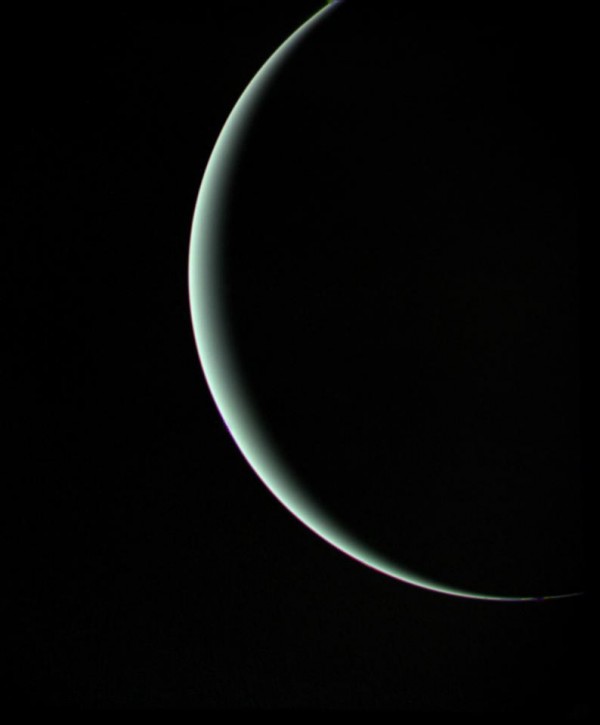By Ana Verayo, | October 16, 2016

Voyager 2 captured this moody parting shot of Uranus as the spacecraft sped off toward its next adventure at Neptune.
Astronomers say that the planet Uranus may have two small moons that have not been observed before, both orbiting the gas planet closer than its other natural satellites.
The two mysterious moons are apparently causing wavy patterns on Uranus' rings. To date, the icy gas giant possesses 27 moons, still fewer than its massive neighbors Jupiter and Saturn.
Like Us on Facebook
NASA's last mission to Uranus was during a 1986 flyby by the Voyager 2 spacecraft, making this discovery a very mysterious one, and also suggesting there might be more moons lurking around Uranus.
Uranus' rings are darker and narrower than Saturn's. Astronomers first detected them in 1977 when Voyager 2 found two moons--Cordelia and Ophelia--on Uranus' outermost ring called Epsilon. This very thin ring is caused by the gravitational forces of these two moons as they form planetary particles into a ring shape.
In this new study, planetary scientists Rob Chancia and Matthew Hedman of the University of Idaho re-examined data obtained from the Voyager mission and discovered new wavy patterns in the other rings known as Alpha and Beta. They now suggest that they are being caused by gravitational pulls from other moons.
Chancia describes the moons as tiny, about four to 14 kilometers wide, if they do exist. They also suggest that they are so small therefore Voyager did not detect them.
Hedman said that Uranus' rings are also too dark, making these new moons very difficult to see in this region, also suggesting that the moons are also dark in color.
In the next few months, SETI Institute and NASA's Hubble Space Telescope will observe these two new mysterious moons of Uranus. If the existence of these two new moons is proven, a Uranus orbiter mission can become a possibility to further explore this overlooked gas planet.
This new study has been published in The Astrophysical Journal.
-
Use of Coronavirus Pandemic Drones Raises Privacy Concerns: Drones Spread Fear, Local Officials Say

-
Coronavirus Hampers The Delivery Of Lockheed Martin F-35 Stealth Fighters For 2020

-
Instagram Speeds Up Plans to Add Account Memorialization Feature Due to COVID-19 Deaths

-
NASA: Perseverance Plans to Bring 'Mars Rock' to Earth in 2031

-
600 Dead And 3,000 In The Hospital as Iranians Believed Drinking High-Concentrations of Alcohol Can Cure The Coronavirus

-
600 Dead And 3,000 In The Hospital as Iranians Believed Drinking High-Concentrations of Alcohol Can Cure The Coronavirus

-
COVID-19: Doctors, Nurses Use Virtual Reality to Learn New Skills in Treating Coronavirus Patients







